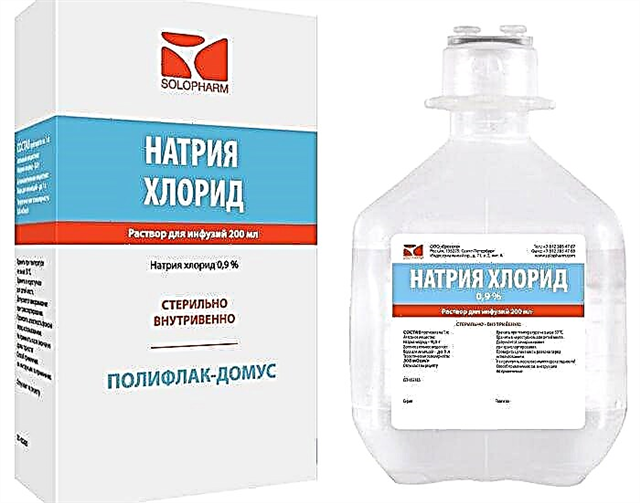
Lymph nodules prevent the baby's body from various infections. Normally, these formations are practically impossible to see. In what cases the baby's cervical lymph nodes are enlarged and how you can help a sick child are described in this article.


Causes of occurrence
The appearance of a "bump" behind the ear indicates that the child has enlarged one or more lymph nodes. The sizes of such formations can be very different.
In a newborn baby, the "bump" can be quite large. It is important to note that lymph node pathologies can manifest themselves at very different ages. In a normal state, the lymph nodes are of normal size and are tightly connected to the surrounding skin. They do not hurt and do not bring any discomfort to the baby.
The color of the lymph nodes behind the ear usually does not differ from healthy skin. They are pale pink in color.


Various causal factors can lead to the development of this pathological condition:
- Chronically flowing otitis media or sinusitis can lead to the spread of the inflammatory process also to closely located behind the ear lymph nodes. Especially often this situation develops when the baby has just had a cold or SARS.
- Inflammation of the lymph nodes behind the ear also occurs in babies who have bad teeth. Periostitis or caries promotes the spread of inflammation to the area of lymph nodes that are located in the immediate vicinity. Quite often, such a process occurs only on one side, where there are diseased teeth.


- Even ordinary runny nose, flowing in a protracted form, can lead to inflammation of the lymph nodes. Especially dangerous in this case is the appearance of nasal discharge due to various bacterial infections.
- The most dangerous microbes are staphylococci and streptococci. Inflamed lymph nodes in this situation will persist in a sick baby as long as there is a high concentration of pathogenic microbes in the body.

- The cervical lymph node can also become inflamed after severe hypothermia. Usually, this condition occurs in a child after walking in the wind. Neglecting a scarf only contributes to rapid hypothermia. Even a short walk in windy weather is enough for a baby to have such a formation behind the ear.

- A "bump behind the ear" can form on a child's head and from injury. Such formations appear most often in young children. At this age, babies begin to actively learn about the world around them. This symptom is especially often manifested in infants. This pathological condition can develop as a result of the child's frequent falls when trying to walk, as well as when the baby begins to try to stand up.
- If a child hits his head on an object, he may appear on the frontal bone various damage. This situation can also manifest itself in a child by the appearance of a "bump" both on the face and behind the ear. The size of education in some cases can even reach 4-5 cm.

- Immunodeficiency states, congenital or acquired, are also manifested by various pathologies of the lymph nodes. So, intrauterine HIV infection can lead to the appearance of bilateral inflammation. In this case, the lymph nodes reach the size of a walnut. They are usually very hard in density and painless.
- Tuberculosis infection, proceeding with a decrease in immunity, is also manifested by an increase in various groups of lymph nodes. The appearance of a small "bump" on the back of the neck on both sides is one of the characteristic symptoms of tuberculosis in babies. The course of this disease is also quite severe. The sick child looks very emaciated, lethargic.


- Quarantine infections also can lead to the fact that the child has an increase in the cervical lymph nodes. Such diseases include: scarlet fever, infectious mononucleosis, measles, hysteriosis and others. Diagnostics of these pathologies is rather complicated. To establish the correct diagnosis, a whole range of various laboratory tests and instrumental studies are required.
- Infection with fungal flora contributes to the fact that the baby's lymph nodes located on the back and side of the neck swell. A decrease in immunity also contributes to the appearance of such symptoms in a sick child.
Fungal infections are usually affected by weakened children or babies with chronic diseases of internal organs.

- In some children, swollen lymph nodes in the neck may appear after streptococcal acute tonsillitis. The development of the disease in young children is especially unfavorable in this case. A streptococcal infection is also accompanied by severe sore throat and high fever, the values of which quite often reach 39-39.5 degrees.

- Use of certain medications may also contribute to the development of enlarged lymph nodes in a child. So, taking allopurinol, some types of beta-blockers, captopril, cephalosporins and other types of antibiotics, gold preparations, antimalarial drugs and sulfonamides leads to the appearance of a "bump" behind the ear in a sick baby. In this case, the process is most often two-way.
- The appearance of a "bump" behind the ear in a child can be a manifestation of very dangerous pathologies. This is how various neoplasms of hematopoietic organs and even some malignant pathologies. Lymphosarcoma or lymphogranulomatosis are frequent diseases that lead to the fact that the cervical lymph nodes in a sick child increase significantly in size.


What does it look like?
Parents can notice that the baby has a swollen cervical lymph node on their own. In this case, it acquires a bright red color and becomes hot to the touch. Normally, the lymph nodes are not fused to the skin. This symptom can also be detected at home during the feeling of damaged nodules.
Inflamed cervical lymph nodes are very tightly connected to the skin. When feeling them, pain is usually noticeably increased.

In a one-year-old baby, it is not at all difficult to notice a "bump" behind the ear. Usually it stands out noticeably above the level of the skin. The color of the formation can be different - from pale pink to crimson. It depends on what reason caused this manifestation in the baby.
The density of the inflamed lymph nodes can vary. With a moderate course of the disease, they acquire a soft consistency.
Prolonged pathological conditions can contribute to the fact that the lymph nodes become very dense, and in some cases even "stone" in density.

The size of such a cervical mass may vary. In some forms of bacterial infections, the "lump" behind the ear reaches the size of a hazelnut or almond.
The appearance of several formations at once on the one hand may indicate a severe course of the disease, as well as the possible presence of some dangerous diseases of the hematopoietic organs in the child.

A "bump" behind the ear is not always the only symptom that manifests itself in a sick baby. As a rule, the child's well-being also deteriorates significantly. His body temperature rises, the values of which can be very different.
An easy flow is accompanied by subfebrile condition. In more severe cases, the body temperature can rise to 38-39 degrees and even higher.
A sick child becomes capricious, apathetic, nervous. Many children begin to show symptoms of insomnia. In the daytime, the baby may feel drowsy.
A sick child usually gets tired faster. Schoolchildren with lymph node pathologies may perform worse at school and memorize educational material worse.


If the cause of the appearance of a "bump" behind the child's ear is fungal infection, then the baby also shows specific skin symptoms. He is developing pathological dandruff, and also various rashes are formed. Usually they look like small growths of a pale yellow color, slightly protruding above the surface of the skin.

Bacterial infections are manifested by the appearance of a pronounced intoxication syndrome... It is characterized not only by the development of general weakness and loss of appetite, but also by an increasing headache. Usually it has a bursting character and increases with increasing body temperature.

Pain in the area of the affected lymph node does not always appear. Most often it occurs when infected with various bacterial or viral infections. Pain syndrome can also spread to the area of the lower jaw and chest. Neoplasms of the neck and tumors of the hematopoietic organs often proceed without the development of pain. Strengthening the pain syndrome noticeably increases during the palpation of the inflamed lymph nodes.
It should be noted that it is undesirable to carry out such palpation at home, since this can only aggravate the course of this pathological condition.

Feeling the affected lymph nodes can lead to the fact that the inflammatory process will spread to other anatomical areas.
The sick child's behavior also changes markedly. This even manifests itself in infants. Babies may cry more often, refuse to breastfeed. In the daytime, the child almost constantly sleeps, and at night, on the contrary, quite often wakes up.

Drug therapy
The inflamed lymph node in the child's neck should be treated under the mandatory supervision of the attending physician. Many parents immediately begin to warm up the affected skin area, which in most cases only contributes to the progression of the disease, and can also lead to the development of dangerous complications.

Warming compresses can be applied only after a diagnosis has been established. In case of diseases of the hematopoietic organs and neoplasms, it is by no means possible to warm the lymph nodes.
The main therapy for the disease largely depends on what cause caused the development of adverse symptoms in the child. If there are bacteria in the child's body, various antibacterial drugs are prescribed. Better to use funds having a wide range of rendered actions. These drugs include synthetic clavulanic acid protected penicillins, macrolides and cephalosporins. It is better to use antibiotics in a course.
Parents should remember that in order to achieve a positive result, the obligatory use of drugs is required during the entire course of the prescribed treatment. It is impossible to stop using such drugs on your own, as this can worsen the course of the disease.

In some cases, one course of treatment may not be sufficient. In this situation, the selection of another drug or a change in the prescribed combination of drugs is required.
To eliminate allergic manifestations, various antihistamines. They will not only help eliminate the swelling of the inflamed lymph nodes, but will also contribute to a noticeable improvement in the well-being of the sick baby. Against the background of taking such drugs, the child becomes more mobile, his pathological drowsiness decreases and his appetite normalizes. These drugs include: "Suprastin", "Zirtek", "Claritin" and others.
To eliminate adverse symptoms, you may need to consume them for 10-14 days. Longer use must be discussed with your doctor.
In severe cases, drugs are prescribed in the form of various injections. They are usually carried out under stationary conditions.
Sulfanilamide preparations are also used to treat certain types of bacterial infections. These funds have a fairly pronounced therapeutic effect, but they have many side effects. These adverse effects include abdominal pain, dyspepsia, nausea, and a marked decrease in appetite. These funds are used only for strict medical reasons.

To eliminate the adverse symptoms that have arisen with otitis media, apply anti-inflammatory drops. They are buried 2-3 times a day according to the instructions on the package. Otipax helps to eliminate the adverse symptoms of the disease in 3-5 days. These drops are used in the affected ear.

If a sick child's body temperature rises, then in this case an appointment is required antipyretic drugs. Such funds are used for febrile conditions. In pediatric practice, drugs containing paracetamol and ibuprofen are most successfully used.
It is undesirable to use acetylsalicylic acid to normalize high body temperature, since it has quite a few dangerous complications that can occur when taking such a drug.

Anti-inflammatory drugs help reduce intoxication syndrome. Taking such funds helps to improve the well-being of the baby, and also removes inflammation. These same remedies will also reduce any pain syndrome that occurs in the area of the damaged lymph node. The appointment of these drugs is carried out by the attending physician, since they have a lot of various side effects when using them.
General tonic help to restore the well-being of a sick child. Also, these drugs have a moderate stimulating effect on the immune system. Multivitamin complexes can be prescribed for a long time. To restore the immune system, you need to take these drugs for several months.

It is possible to reduce the swelling of the inflamed cervical lymph node by using various physiotherapy procedures. Physiotherapy is prescribed only when the acute period of the disease subsides. Ultrasound, phonophoresis, or electrophoresis with lidocaine will help reduce the manifestations of the inflammatory process and reduce pain. To achieve a positive effect in this case, 10-12 such procedures may be required.

Some forms of purulent inflammation in the neck can be complicated by the development of abscesses. These formations also look like dense, rather large "bumps" located on the side or back of the neck.
Treatment of such purulent lymphadenitis is carried out only by surgery. In the future, rehabilitation requires the appointment of antibacterial agents.

What can you do at home?
Taking proper care during the acute phase of the disease plays a very important role in the treatment of the disease. All procedures that are performed on a sick child must be agreed with the attending physician. Improper hygiene can lead to the fact that the disease will only progress.
In order to prevent additional damage to the cervical lymph nodes, you need to carefully select warm clothes for your child for walking. In the cold season, the baby should wear a scarf. It is better to choose products that not only warm enough, but also light at the same time.

Some advice from alternative medicine not only may not help the child, but can also cause the progression of the disease in him. You should only use these methods very carefully. Better before that, be sure to consult with your doctor.
To reduce intoxication, you can use various decoctions made from medicinal plants that have anti-inflammatory effects. Also, such decoctions help to effectively fight bacteria and viruses that have settled in the child's body. As such treatment, you can use pharmacy chamomile and sage. They can be used as tea or as a warming drink.

For information on why a child may have a lump behind the ear, see the next video.



